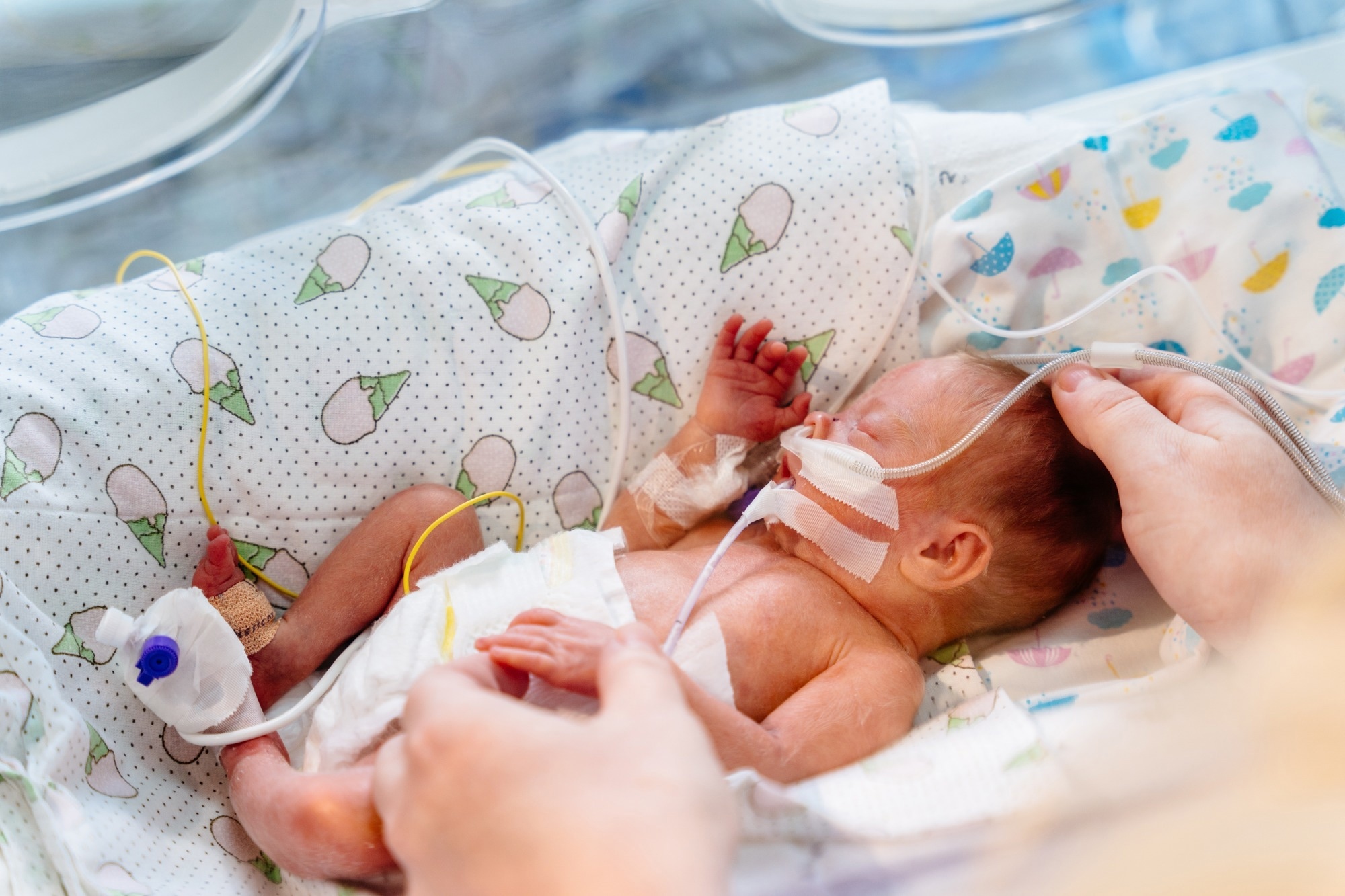Study reveals gene expression changes at birth that could enable early detection and treatment of neonatal sepsis.
Study: Predictive gene expression signature diagnoses neonatal sepsis before clinical presentation. Image Credit: Iryna Inshyna/Shutterstock.com
In a recent study published in the eBioMedicine, a group of researchers identified gene expression biomarkers that enable the early prediction of neonatal sepsis (a severe bacterial infection in infants under 28 days old, leading to systemic inflammation and serious complications) at birth, prior to clinical symptoms, facilitating timely intervention.
Background
Sepsis leads to life-threatening organ failure due to dysregulated host responses to infection and presents uniquely across age groups.
Neonatal sepsis, affecting infants in their first 28 days, occurs in 2-3 per 100 live births globally, particularly impacting preterm and low-birth-weight neonates. Mortality rates can reach 17.6%, especially in low/middle-income countries, with sepsis being a leading cause of neonatal death.
The non-specific clinical signs often delay diagnosis, making timely treatment critical. Current diagnostic methods, including blood cultures, are insufficient, emphasizing the urgent need for specific biomarkers to identify sepsis early and accurately. Further research is essential to develop predictive biomarkers for timely intervention.
About the study
The Systems Biology to Identify Biomarkers of Neonatal Vaccine Immunogenicity study enrolled 720 healthy full-term neonates (≥37 weeks gestational age) in The Gambia from 2017 to 2019. Whole blood was collected from these neonates at two time points: day-of-life (DOL) 0 and a second sample taken randomly at DOL 1, 3, or 7.
Among this cohort, 33 neonates were hospitalized within 28 days due to clinical signs consistent with sepsis. Of these, 21 were diagnosed with sepsis based on either blood culture results or clinical diagnosis, while the remaining 12 had localized infections without systemic signs. Septic neonates were categorized into early-onset sepsis (EOS) and late-onset sepsis (LOS).
Blood samples were processed for Ribonucleic Acid (RNA) sequencing, and bioinformatic analyses were conducted using R. Differentially expressed genes (DEGs) were identified using Differential Gene Expression Analysis based on the Negative Binomial Distribution (DESeq2), comparing healthy controls, localized infection cases, and septic neonates.
Predictive gene biomarkers for sepsis were developed through machine learning methods, including Sparse Partial Least-Squares Discriminant Analysis (sPLS-DA) and Least Absolute Shrinkage and Selection Operator (LASSO) regression. The study ensured rigorous statistical methods to evaluate DEGs, with findings validated against external datasets.
Study results
The cohort consisted of term neonates, all born between 37 and 42 weeks of gestation, with a median gestational age of 40 weeks. At birth, the neonates exhibited Apgar scores ranging from 8 to 10, with a median score of 10.
The demographic and clinical parameters of healthy neonates and those hospitalized for sepsis were comparable, showing no statistically significant differences, which may be attributed to the limited cohort size. Upon hospitalization, septic neonates presented significantly higher neutrophil counts, received antibiotics more frequently and had longer hospital stays compared to those with localized infections only.
Transcriptional differences were evident in septic neonates even before clinical symptoms emerged. Among the neonates with DOL 0 samples who later developed sepsis, a total of 469 DEGs were identified when compared to healthy neonates and 476 DEGs in relation to those with localized infections.
Further analysis revealed that neonates with EOS exhibited 1,067 DEGs compared to those with LOS, 984 DEGs compared to localized infection cases, and 1,086 DEGs when compared to healthy controls.
Pathway analysis highlighted the dysregulation of several processes, including the regulation of heat shock response and various cell cycle pathways, indicating significant host response alterations prior to clinical presentation.
Machine learning algorithms were employed to identify predictive biomarkers for EOS at birth. The sPLS-DA identified heat shock protein family H member 1 (HSPH1) and DnaJ heat shock protein family member B1 (DNAJB1) as major contributors to distinguishing EOS neonates from others.
These heat shock proteins were upregulated in EOS cases and were associated with the enriched pathways observed. Additionally, the LASSO regression model identified a 4-gene signature (HSPH1, DNA primase subunit 1 (PRIM1), BORA aurora kinase A activator (BORA), and non-SMC condensin II complex subunit G2 (NCAPG2)) that demonstrated excellent predictive capability for EOS with an Area Under the Curve (AUC) of 0.94, sensitivity of 0.93, and specificity of 0.92.
The study also included follow-up samples from the first week of life to assess how neonatal sepsis might impact developmental trajectories. By analyzing DOL7 samples from EOS neonates and matched healthy controls, researchers found 3,931 DEGs in EOS neonates compared to 2,456 in healthy neonates.
While many pathways were disrupted in EOS neonates, several metabolic and immune pathways remained conserved, underscoring the complexity of immune and metabolic adaptations during early development and the potential for early biomarkers to predict sepsis outcomes.
Conclusions
To summarize, this study successfully identified gene expression biomarkers that predict neonatal sepsis at birth despite challenges in developing such predictors. HSPH1 was a significant predictor for EOS, forming part of a 4-gene signature that distinguished EOS from LOS, localized infection, and healthy controls.
Additionally, gene expression changes during the first week of life indicated that sepsis disrupts immune and metabolic development while many ontogeny processes remain conserved.
These findings underscore the need for improved diagnostics in neonatal sepsis, particularly in low- and middle-income countries, and highlight the potential for broader application in diverse populations.
Source link : News-Medica

